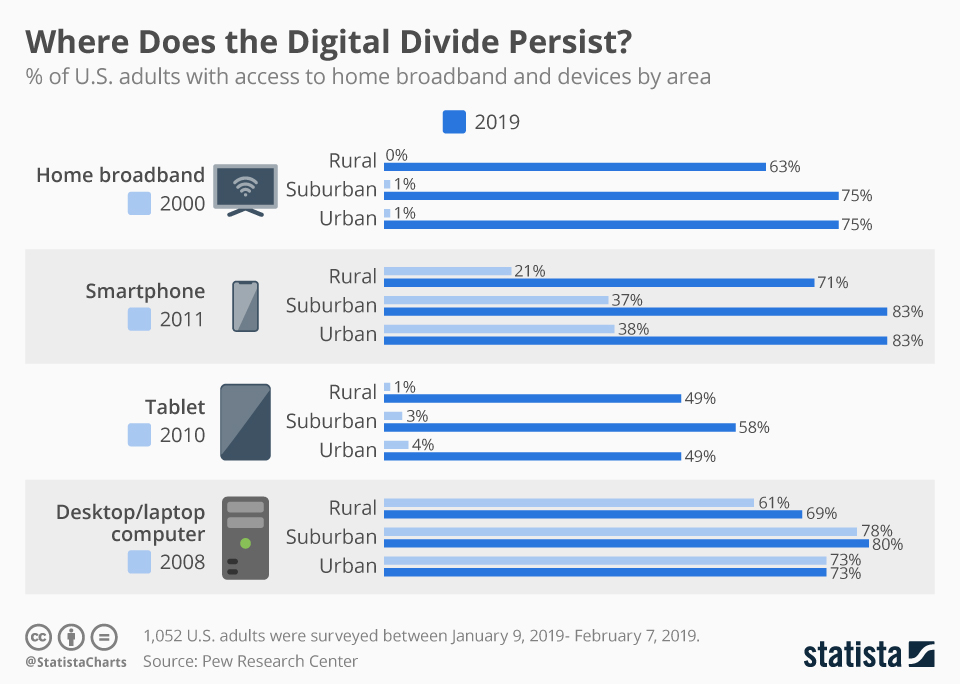Rural communities are now more likely to have access to broadband and internet connected devices, like smartphones and laptops than ever before, yet gaps between rural residents and their urban and suburban counterparts persist.
For internet connected devices the biggest gap remains in the smartphone arena. Pew surveyed rural residents about their devices and found that about seven in ten rural respondents had a smartphone, a rate that is closer to eight in ten for suburban or urban respondents. While there is a gap in reported smartphone ownership, that gap has closed significantly from 2011, when there was around a 16 to 17-point gap between rural and suburban/urban residents.
Outside of the devices, simply accessing reliable home broadband remains a problem for rural households in the U.S. About 63 percent of respondents in rural communities had access to home broadband, compared to three-quarters of respondents in suburban and urban communities. Back in 2000, practically nobody had home broadband, regardless of the area they lived in. By 2019, a 12-point gap in access emerged, which points to a noticeable trend in the adoption of many technologies: as it advances, some people are left behind.


